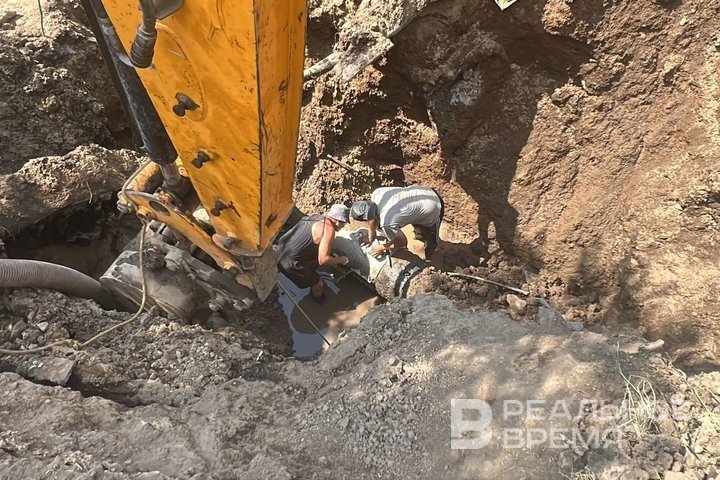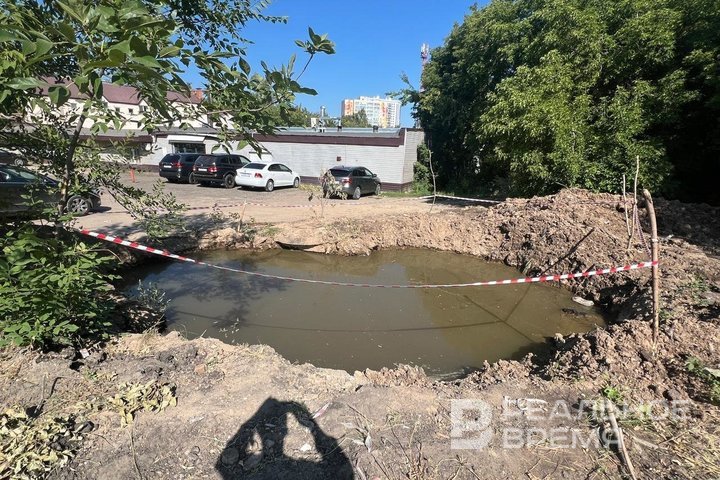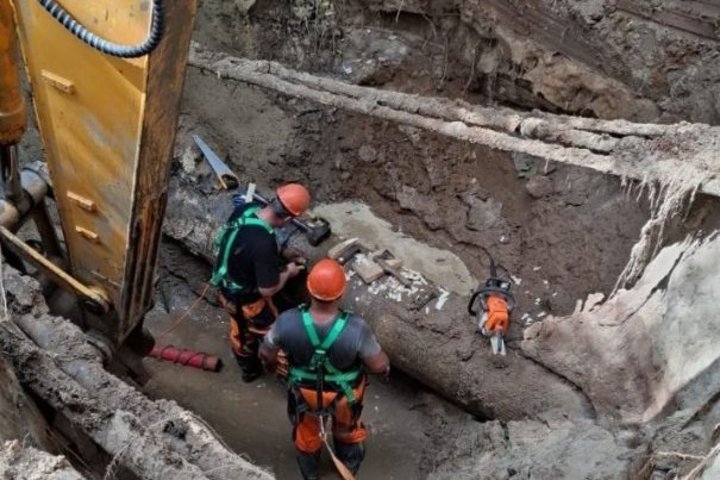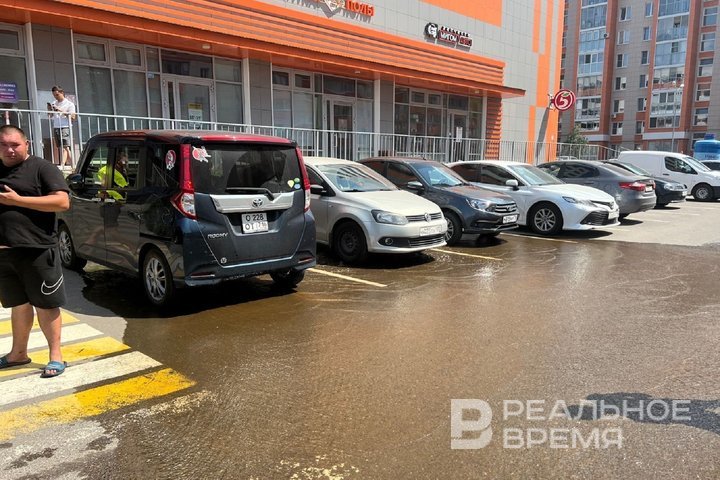Repair of water supply system a la Kazan: holes in the pipes filled with sticks out of branches
More than half of the water and sewer networks are 100% worn out in the capital of Tatarstan

Vodokanal Kazan Municipal Unitary Enterprise is repairing a rotten water pipe on Daurskaya Street with wooden chopsticks. Realnoe Vremya — about inexpensive repairs and endless under-repair of Kazan water supply and sewerage networks.
“There is no way out”
“On July 8, a water pipe burst on Daurskaya Street once again and our houses were left without water for 2 days in the hottest weather," Mikhail Shutov, a resident of Zhuravli residential complex, told Realnoe Vremya. “Such emergency shutdowns occur regularly, several times a year. The rest of the time, apparently, the water supply is leaking, just the water is not shut off. And it is not surprising that it is constantly leaking: there is no living place on the pipes, and Vodokanal employees use tree branches for repairs!

“I asked the foreman who supervised the work if such repairs would last for a long time," says Mikhail. “He replied that for sure not for long, but there is no way out: pipes need to be replaced here, and funds for this are expected to appear only by the end of 2024.
Another accident was not long in coming. “The emergency situation has been eliminated locally, the water supply has been restored," Vodokanal commented on the situation to Realnoe Vremya.

Water supply “breaks” more often
Kazan Vodokanal repairs with improvised means not only on Daurskaya Street and not only water pipes, but also sewer pipes. Hole patching is unreliable
“Vodokanal maintains 3,615 kilometres of pipelines, 200 pumping stations, 10 underground water intakes, sewage treatment plants, 8 snow melting stations and a complex of hydraulic structures of the city, which contains 9 dams, 4 causeways, 18 drains and 7 pumping pumping stations," the organisation told Realnoe Vremya. “The average depreciation of the infrastructure exceeds 70%. 1,920 kilometres of networks have served their regulatory period and are 100% worn out, of which 1,100 kilometres are water supply networks and 820 kilometres are wastewater disposal.

After doing two simple arithmetic operations with the above numbers, we get a stunning result: more than 53% of the water supply and sewerage networks in Kazan are 100% worn out, that is, in fact, they are in an unusable condition. And the situation is getting worse before our eyes, and the water supply networks are collapsing faster than the sewage ones:
“Water supply networks are breaking more often. In 2023, 1,219 accidents occurred on water supply networks, which is by 45 more than a year earlier. In 2023, there were 204 accidents on sewer networks with a network length of 1,459 km.
Vodokanal emphasises that the work on updating networks is complicated by the fact that the number of networks serviced by the organisation increases annually. Over the past 15 years, more than 1,300 km of dilapidated ownerless networks have been accepted on the company's balance sheet, of which 560 km are in settlements where maintenance costs are higher.
From 80 thousand to several million
To assess the scale of the problem, Realnoe Vremya asked Vodokanal Municipal Unitary Enterprise for information on the cost of repair of engineering networks.
“On average, the local elimination of one accident on water supply networks costs from 80 to 150 thousand rubles, in other cases it can reach 1 million," the organisation reported. “The situation is more complicated on sewer networks, it may take from 100 thousand to several million rubles to locally eliminate one failure on the networks.
The total under-repair of networks in the Vodokanal household is currently estimated at 127 billion rubles. This amount includes the necessary costs for the reconstruction of sewer collectors (30 billion), water supply networks (24 billion), structures (49 billion), and the construction of pressure collectors from the Zarechnaya SPS (23 billion). In addition, Vodokanal clarified that another 5.1 billion rubles are required for the reconstruction of 305 km of water supply and sanitation networks in urban settlements.
Residents pay for the delivery of water to accident site
In 2024, the volume of work of Vodokanal on the replacement of networks should amount to 1.1 billion rubles. At this rate, it will take more than 115 years just to repair what needs to be repaired today, and during this period not only existing networks will rot, but also those that are planned to be laid in the distant future. And with the growth of under-repair, which, as previously reported by the now ex-director of Vodokanal Andrey Egorov, is growing by an average of 3% per year, the volume of leaks from the city's water supply is also growing.


Thus, the end user today pays not only for the transportation of water to the house and apartment, but also for unplanned emergency leaks.
A year ago, when an experiment was launched in Kazan to switch to long-term investment tariffs for water supply and sanitation services, and the limit indices for Kazan were raised by 31.3% (the increase is gradual — until 2025), Khabibullina told media representatives that the increased investment component, which was introduced for 3 years, will allow Vodokanal to upgrade 46.2 km of networks within the framework of the Vodokanal investment program worth 7.5 billion rubles.
The programme will be in effect until the end of 2028 and, according to Khabibulina, “it will be enough to “close” the most dangerous areas of the worn-out infrastructure of the enterprise. Thus, it is not necessary to count on the elimination of the main volume of under-repair. But does it make sense to increase tariffs if from one fifth to almost half of the growing water tariff is spent on supplying water to accident sites, and these accidents are “eliminated” with wooden plugs?
P.S. After the release of the material, Vodokanal additionally explained that the repair of pipes at Daurskaya with wooden wedges and clamps is carried out in accordance with the established technology, because cast-iron pipes are laid there, which, unlike steel pipes, are not subject to welding, and therefore it is impossible to weld damage to them or partially replace the pipe with a short damaged one the segment.